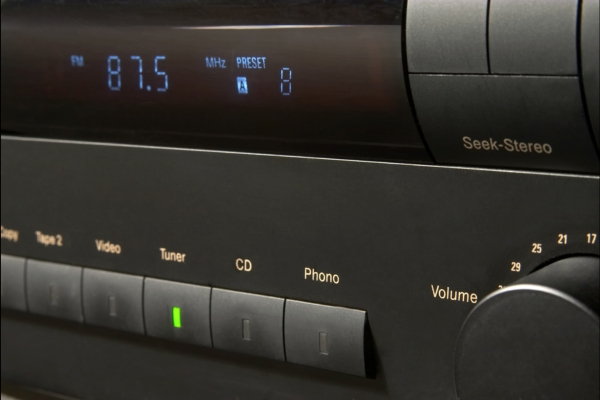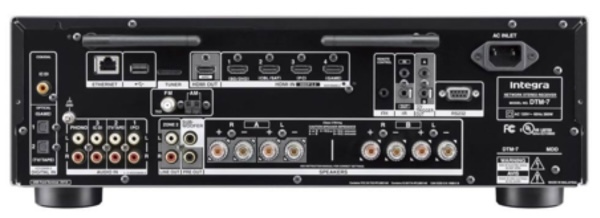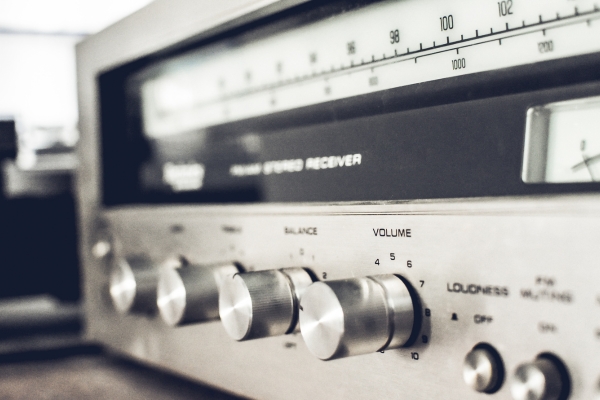A Beginner’s Guide to Stereo Receivers
A stereo receiver is the central hub of a traditional two-channel audio system. Whether you’re listening to vinyl records, streaming music, or tuning in to the radio, a stereo receiver connects your audio sources to your speakers and delivers clear, high-quality sound.
Unlike home theater receivers, which power surround sound systems with multiple channels, a stereo receiver is designed specifically for two-channel (left and right) audio — ideal for music playback.
Most models combine three main functions: an amplifier, a radio tuner (for AM/FM stations), and an input selector, which will allow you to switch between different sources like a turntable or CD player. Higher-end stereo receivers may also offer digital inputs, wireless streaming features, and voice control compatibility, making them as versatile as they are powerful.
Whether you’re building your first audio system or upgrading an older one, understanding the core features of stereo receivers can help you choose the right model for your needs.
In this article, we’ll walk through the key features you’ll find in most stereo receivers and how they can enhance your listening experience.

AM/FM Radio Tuner with Presets
Many stereo receivers still include built-in AM/FM tuners, giving you easy access to local radio stations. This is a great way to discover new artists, enjoy talk radio, or catch up on the news.
If you live in a rural area or want better signal quality, you might consider replacing the basic antenna that comes with the receiver with a more robust external AM/FM antenna for stronger reception.
Internet Radio Support
In addition to traditional AM/FM tuners, many modern stereo receivers also support internet radio. This allows you to stream thousands of stations from around the world, giving you access to global music, talk shows, news, and niche genres that local stations might not offer.
Receivers with built-in Wi-Fi or Ethernet connectivity often come preloaded with apps like TuneIn, vTuner, or iHeartRadio. Some brands integrate internet radio into their proprietary platforms — for example, Yamaha’s MusicCast includes direct access to online stations through its mobile app.
Internet radio typically offers clearer sound quality than AM/FM and doesn’t rely on a physical antenna, making it an excellent option for those in rural areas or listeners who want more variety and better fidelity.
Analog Audio Inputs
Analog inputs allow you to connect traditional audio devices like CD players and turntables using red-and-white RCA connectors. These have been a standard for decades and are still widely used due to their reliability and simplicity.
If you plan to use a turntable, check whether the receiver has a built-in phono preamp. This small circuit boosts the low-level signal from your record player to a usable volume. If the receiver doesn’t have one, you’ll need an external phono preamp, which some audiophiles prefer anyway for higher-quality sound customization.
High-end stereo receivers may also feature balanced inputs, which use XLR connectors. These are especially useful in professional or long-distance setups, as they help reduce signal interference and noise.

Digital Inputs and USB Connections
Most modern receivers include digital inputs, such as optical and coaxial connections. These are used to bring in audio from TVs, Blu-ray players, or gaming consoles. Digital connections can deliver clearer sound compared to analog because they transfer data with less chance of interference.
You may also find USB ports on some receivers:
- A Type-B USB port is often used to connect a computer for playing music files directly.
- A Type-A USB port is designed for flash drives or external hard drives containing digital music.
In addition, many receivers offer an Ethernet port, which lets you connect directly to your internet router for more stable streaming, faster updates, and integration with music services.
HDMI Inputs (on Some Models)
While stereo receivers are mainly for music, some include HDMI inputs to pass video and audio from sources like streaming devices or gaming consoles.
Look for features like 4K and HDR compatibility if you plan to route your video through the receiver to a TV. This ensures you get the best picture quality along with great sound.
Speaker Terminals and Other Outputs
The most essential outputs on a stereo receiver are the speaker terminals. Entry-level models may use spring clip connectors, but most feature binding posts, which provide a secure, high-quality connection. Some binding posts are even gold-plated to improve electrical conductivity and resist corrosion.
For easy setup, you can use banana plugs — special connectors that slide into the binding posts and hold your speaker wire securely.

Many receivers also offer:
- A/B speaker switching: Lets you connect two pairs of speakers (for example, one in your living room and another out in the garden). You can play music in either zone or both simultaneously — though both zones will play the same audio source.
- Line-level RCA outputs: These allow you to send audio to a second amplifier or to powered speakers in another room.
- Subwoofer output: This enables you to connect a powered subwoofer for deeper, punchier bass — something that older stereo systems often lacked.
- Headphone jack: Handy for when you get the Focal headphones out for private listening sessions.
Wireless Streaming and Multi-Room Audio
Modern stereo receivers often include Bluetooth and Wi-Fi, allowing you to wirelessly stream music from your smartphone, tablet, or computer. Many models also support popular music streaming services like Spotify, Pandora, Deezer, and TuneIn.
Some brands offer their own multi-room audio systems. For example:
- MusicCast (Yamaha): Lets you control playback and stream to compatible devices using an app.
- Apple AirPlay 2: Allows wireless multi-room playback from iPhones, iPads, or Macs.
- DTS Play-Fi: Works across many different brands and supports high-resolution audio.
- Chromecast Built-in: Lets you stream directly from your mobile device to your receiver and connected TV or speakers.
With these systems, you can control your music from anywhere in the house and even sync playback across multiple rooms.

Voice Control Compatibility
Some stereo receivers now support voice assistants like Amazon Alexa, Google Assistant, or Apple Siri. This allows you to use voice commands to adjust volume, skip tracks, or switch sources — all without getting off the sofa. Oh the good life.
If voice control is important to you, check the receiver’s compatibility with your preferred smart home ecosystem.
A Beginner’s Guide to Stereo Receivers
We hope this beginner’s guide to stereo receivers has helped you understand what to look for when building or upgrading your sound system. Whether you’re spinning records, streaming your favorite playlists, or listening to the radio, a stereo receiver offers the flexibility and performance to bring your music to life.
From analog and digital inputs to wireless streaming and multi-room audio, today’s stereo receivers blend classic functionality with modern convenience. Once you’ve picked the right receiver, all that’s left to do is connect your favorite speakers, sit back, and enjoy the music.
Check out more from our Soundrating Blog
Home Theater Receivers Explained: A Simple, In-Depth Guide
How to Get Better Sound from a Home Audio System
Mastering Sound: The Best EQ Settings for Music, Movies, and More

I am a passionate and skilled car audio enthusiast with 15 years of experience in the industry. My journey started when I replaced my first set of factory car speakers, sparking a deep love for high-quality sound. Since then, I have worked as a representative for renowned brands like Kenwood and Alpine.
With a background in both retail and distribution, I have developed a comprehensive understanding of the car audio market. Currently a certified (MECP) installer in the Mobile Electronics industry, my expertise lies in delivering top-notch audio installations. My knowledge, coupled with my genuine passion, makes me the go-to professional for all car audio needs.
